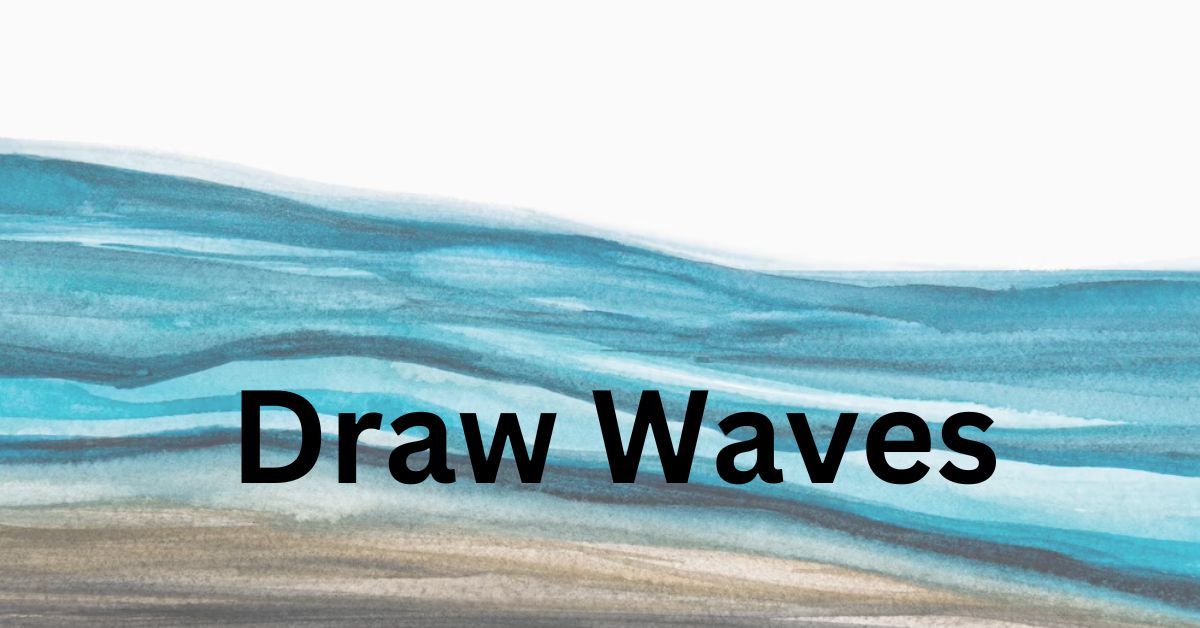Title: “Step-by-Step Guide: How to Draw Waves”
Introduction: How to Draw Waves can be a relaxing and enjoyable activity for both beginners and experienced artists. In this step-by-step guide, we will walk you through the process of drawing waves. Whether you are creating artwork or looking for SEO-friendly content, this guide will provide you with clear instructions to help you depict the beauty and motion of waves.
Step 1: Gather Your Materials Before you start drawing, ensure you have the necessary materials. You will need:
- Paper: Choose a good-quality paper suitable for your preferred medium (pencil, pen, or digital).
- Pencils: Use a range of pencils with different lead grades to achieve varying shades and depths.
- Eraser: Have a soft eraser handy for correcting mistakes.
- Drawing medium: Optionally, you can use pens, markers, or digital drawing tools if you prefer.
Step 2: Observe and Understand Waves Take a moment to observe and understand the structure of waves. Notice their curves, peaks, and troughs. Waves often move in a repetitive pattern, but they can also be irregular and dynamic. Familiarize yourself with different types of waves, such as ocean waves, sound waves, or even simple ripples.
Step 3: Start with Basic Guidelines Begin by lightly sketching the basic guidelines to establish the shape and movement of your waves. Use light pencil strokes to draw the horizon line and the general outline of the wave formations. Remember, waves can vary greatly in size, so you have creative freedom to experiment.
Step 4: Add Detail and Texture Once you’re satisfied with the overall structure, start adding more detail and texture to your waves. Observe the way the water folds and curves within the wave formations. Use curved lines to define the crests and troughs, gradually building up the form and depth of each wave.
Step 5: Play with Light and Shadow To create a sense of depth and realism, add shading and highlights to your waves. Identify the primary light source in your drawing and imagine how it affects the waves. Use darker shades on the shadowed sides of the waves and lighter tones on the exposed areas where light hits. This contrast will enhance the three-dimensional effect.
Step 6: Refine and Adjust Take a step back and assess your drawing. Look for any areas that need refinement or adjustment. You can erase unwanted lines and rework sections until you achieve the desired result. Pay attention to the overall balance and fluidity of the waves.
Step 7: Experiment and Personalize Don’t be afraid to experiment and personalize your waves. You can vary the size, shape, and rhythm of the waves to create different effects. Try adding additional elements like birds, boats, or reflections to add interest and context to your artwork.
Conclusion: Drawing waves requires observation, understanding, and attention to detail. By following these step-by-step instructions, you can create stunning wave illustrations. Remember to gather the necessary materials, establish basic guidelines, add detail and texture, play with light and shadow, and refine your drawing. With practice and creativity, you’ll be able to capture the beauty and fluidity of waves in your artwork. Enjoy the process and let your imagination guide you!
FAQs
Q1: Do I need to be an experienced artist to draw waves?
A: No, drawing waves can be enjoyed by both beginners and experienced artists. With practice and following the step-by-step guide, anyone can learn to draw waves effectively.
Q2: What materials should I use to draw waves?
A: You will need paper, pencils of varying lead grades, an eraser, and optionally, pens, markers, or digital drawing tools.
Q3: Can I draw waves digitally?
A: Yes, you can use digital drawing tools to create wave illustrations. The same principles of observing, understanding, and adding details apply.
Q4: Are there different types of waves I can draw?
A: Absolutely! Waves come in various forms, such as ocean waves, sound waves, or even simple ripples. You can choose the type of waves that inspire you the most and experiment with their depiction.
Q5: How can I make my waves look realistic?
A: To create realistic waves, pay attention to their curves, peaks, and troughs. Add detail and texture by observing the way water folds and curves within the wave formations. Incorporate shading and highlights to give depth and dimension to your waves.
Q6: Can I personalize my wave drawings?
A: Yes, you can personalize your wave drawings by experimenting with different sizes, shapes, and rhythms of the waves. You can also add additional elements like birds, boats, or reflections to make your artwork unique.
Q7: What if I make mistakes while drawing waves?
A: Mistakes are a part of the learning process. If you make a mistake, simply use an eraser to correct it and continue refining your drawing. Don’t be afraid to experiment and adjust as needed.
Q8: How long does it take to become proficient at drawing waves?
A: The time it takes to become proficient at drawing waves varies from person to person. With regular practice and patience, you will gradually improve your skills and develop your own style.
Q9: Can I use this guide for other water-related drawings?
A: While this guide specifically focuses on drawing waves, the techniques and principles discussed can be applied to other water-related subjects like rivers, waterfalls, or even raindrops.
Q10: Can I use these instructions for SEO-friendly content?
A: Yes, the step-by-step guide provided can be used to create SEO-friendly content. By incorporating relevant keywords and providing valuable information, you can optimize the content for search engines.
